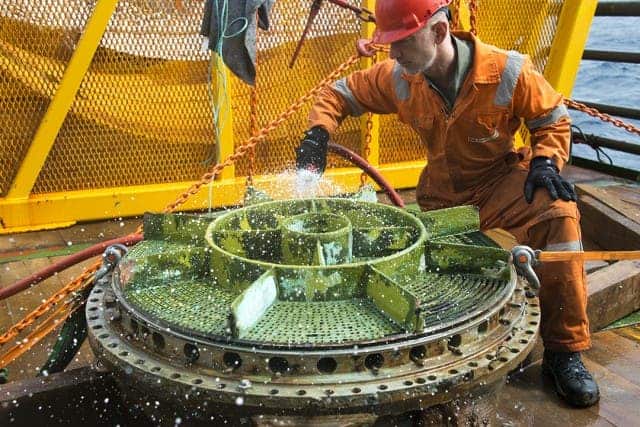
Jeff Bezos is an extraordinary individual whom I admire very much, not because of its almost ubiquitous success in every attempt he has endeavored, but rather because Bezos, much like SpaceX‘s Elon Musk, is a man of vision – a man that recognizes value both in man and nature, and strives for progress.
The Amazon founder, like all great visionaries, is a man that isn’t afraid to relive the past, and moreover to cherish it. This is why last year he announced through his Bezos Expeditions venture fund website that an underwater expedition would be on its way to retrieve the enormous F-1 rocket engines used during the iconic Apollo 11 launch that put man for the first time on the moon.
These rocket engines were behemoths, no less, of thrust and pure raw power, gobbling up 1 ton of RP-1 fuel and 2 tons of liquid oxygen per second! They were used during the Apollo missions to propel the Apollo 11’s Saturn V launch vehicle off the launch pad for up to 150 seconds and onward to the moon.
Anyway, almost exactly one year after Bezos announcement, his foundation reported that the very first components and engine parts have been recovered from the bottom of the Atlantic ocean, after more than 40 years of resting on the seabed. As you can imagine this was no easy task. First of all, the engines were found and had to be retrieved from a depth of three miles or 2,000 feet deeper than the Titan wreck. As such, human divers were absolutely left out of the question and the expedition had to rely on mechanized unmanned submersibles to perform the task.
Remotely controlled, with obstructed visibility due to the murky waters and equipped not with the gentlest of robots, the team involved in the expedition performed a Herculean task in a remarkable display of skill – remember, each fully assembled F-1 is 19 feet (5.8 meters) from nozzle to fuel inlets and weighs about 20,000 lbs (about 9,000 kg). The salvaging team was headed by Rory Golden, who previously worked with Dr. Robert Ballard in locating the Titanic.
What’s interesting however at this point is that the salvaged F-1s might not come from the Apollo 11 mission, but from other missions. Each engine was hand built and assembled, with each component being thoroughly tagged with serial numbers in order for the manufacturing process to be scrutinized. Most of the salvaged components, however, have been so plagued by corrosion and the test of time that these serial numbers can’t be found anymore.
So far, the expedition has pulled out of the bottom of the Atlantic ocean enough parts to fully assemble two F-1 engines. Bezos promises that the reconstructed engines will be part of a grand museum-quality display. It’s also worth noting that Bezos also has a private space venture of his own, Blue Origin, of which we’ll most likely hear about a lot in the future.
“We want the hardware to tell its true story, including its 5,000 mile per hour re-entry and subsequent impact with the ocean surface,” Bezos stated. “We’re excited to get this hardware on display where just maybe it will inspire something amazing.”
story via Ars Technica


